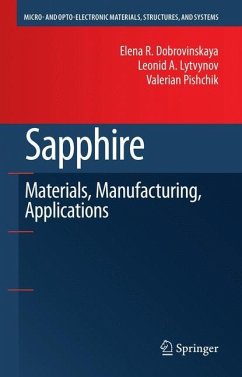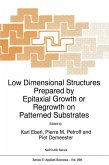This book provides encyclopedic coverage of sapphire: growth and fabrication, high quality material, and numerous practical applications. Some of the fields of application include, but are not limited to, quantum electronics, radio electronics, radio engineering, radiolocation, ultrahigh resolution optics, high temperature optics, aircraft, atomic power engineering, space, space and microwave engineering. Unusual, versatile and attractive physical and chemical properties of sapphire will be addressed, as well as the main trends in the evolution of the growth methods.
Important features of the book include the following:
Addresses for the first time in a convenient and readily accessible format information on physical, chemical, mechanical and other properties of sapphire
Provides users with the up-to-date information of the potential that sapphire provides in the different fields of engineering and applied science, including the areas of micro- and opto-electronics
Summarizes the most important modern growth methods, mechanical and thermal treatment, and fabrication of sapphire products
Provides recommendations for the best method of growing sapphire with the desired (specified) physical-chemical characteristics
By the second half of the twentieth century, a new branch of materials science had come into being - crystalline materials research. Its appearance is linked to the emergence of advanced technologies primarily based on single crystals (bulk crystals and films). At the turn of the last century, the impending onset of the "ceramic era" was forecasted. It was believed that ceramics would play a role comparable to that of the Stone or Bronze Ages in the history of civilization. Naturally, such an assumption was hypothetical, but it showed that ceramic materials had evoked keen interest among researchers. Although sapphire traditionally has been considered a gem, it has developed into a material typical of the "ceramic era." Widening the field of sapphire application necessitated essential improvement of its homogeneity and working characteristics and extension of the range of sapphire products, especially those with stipulated properties including a preset structural defect distribution. In the early 1980s, successful attainment of crystals with predetermined char- teristics was attributed to proper choice of the growth method. At present, in view of the fact that the requirements for crystalline products have become more str- gent, such an approach tends to be insufficient. It is clear that one must take into account the physical-chemical processes that take place during the formation of the real crystal structure, i.e., the growth mechanisms and the nature and causes of crystal imperfections.
Important features of the book include the following:
Addresses for the first time in a convenient and readily accessible format information on physical, chemical, mechanical and other properties of sapphire
Provides users with the up-to-date information of the potential that sapphire provides in the different fields of engineering and applied science, including the areas of micro- and opto-electronics
Summarizes the most important modern growth methods, mechanical and thermal treatment, and fabrication of sapphire products
Provides recommendations for the best method of growing sapphire with the desired (specified) physical-chemical characteristics
By the second half of the twentieth century, a new branch of materials science had come into being - crystalline materials research. Its appearance is linked to the emergence of advanced technologies primarily based on single crystals (bulk crystals and films). At the turn of the last century, the impending onset of the "ceramic era" was forecasted. It was believed that ceramics would play a role comparable to that of the Stone or Bronze Ages in the history of civilization. Naturally, such an assumption was hypothetical, but it showed that ceramic materials had evoked keen interest among researchers. Although sapphire traditionally has been considered a gem, it has developed into a material typical of the "ceramic era." Widening the field of sapphire application necessitated essential improvement of its homogeneity and working characteristics and extension of the range of sapphire products, especially those with stipulated properties including a preset structural defect distribution. In the early 1980s, successful attainment of crystals with predetermined char- teristics was attributed to proper choice of the growth method. At present, in view of the fact that the requirements for crystalline products have become more str- gent, such an approach tends to be insufficient. It is clear that one must take into account the physical-chemical processes that take place during the formation of the real crystal structure, i.e., the growth mechanisms and the nature and causes of crystal imperfections.








